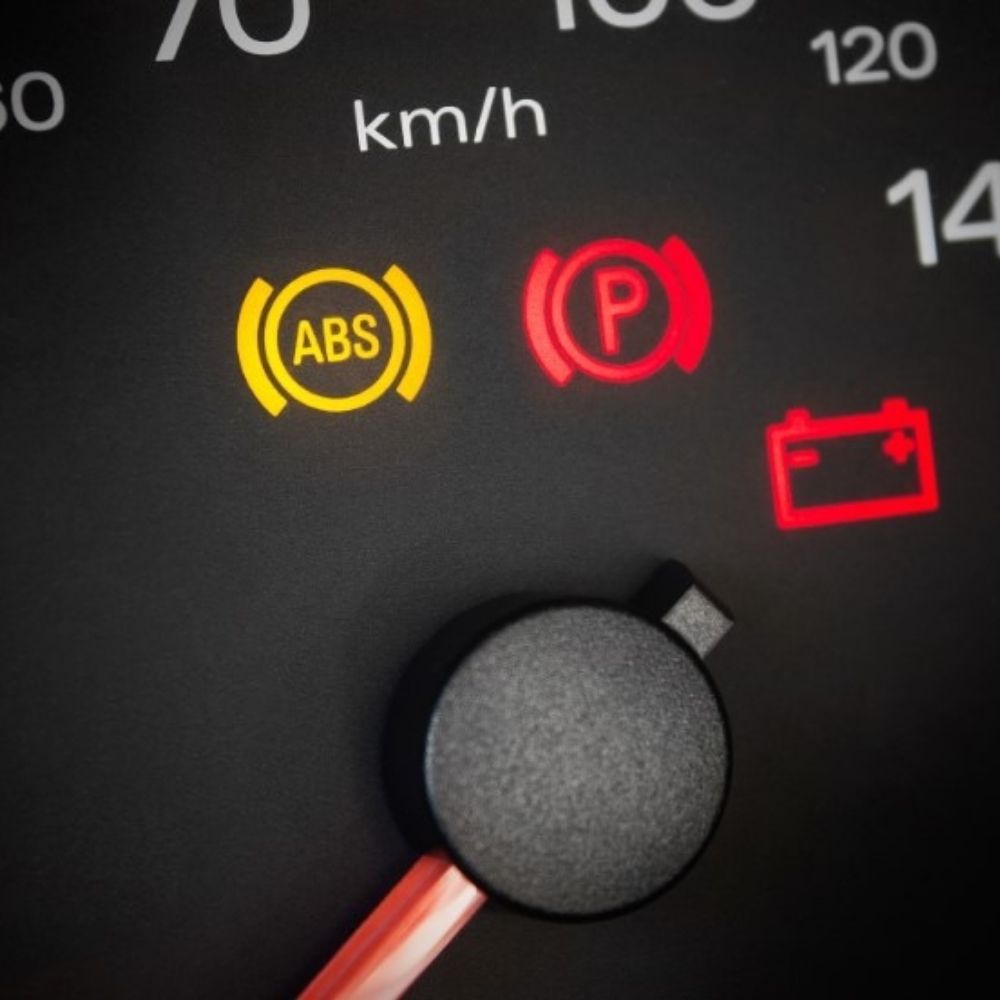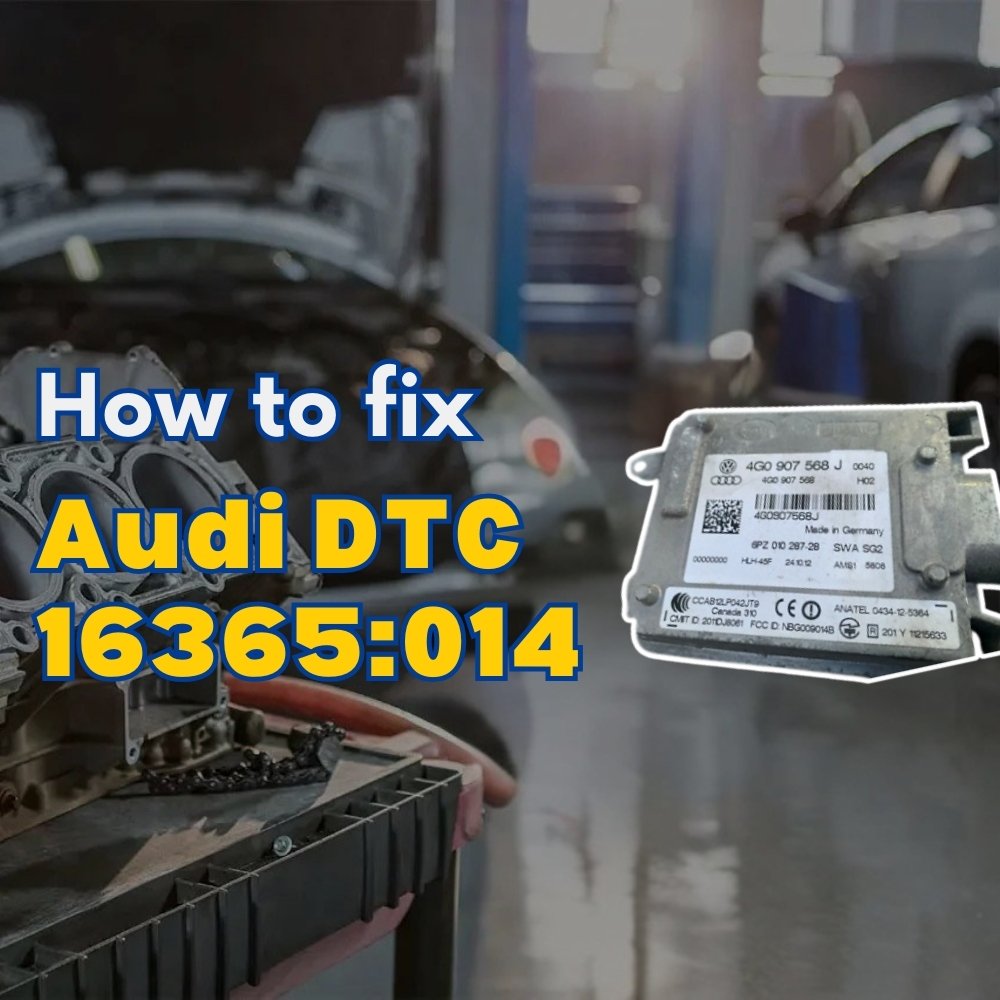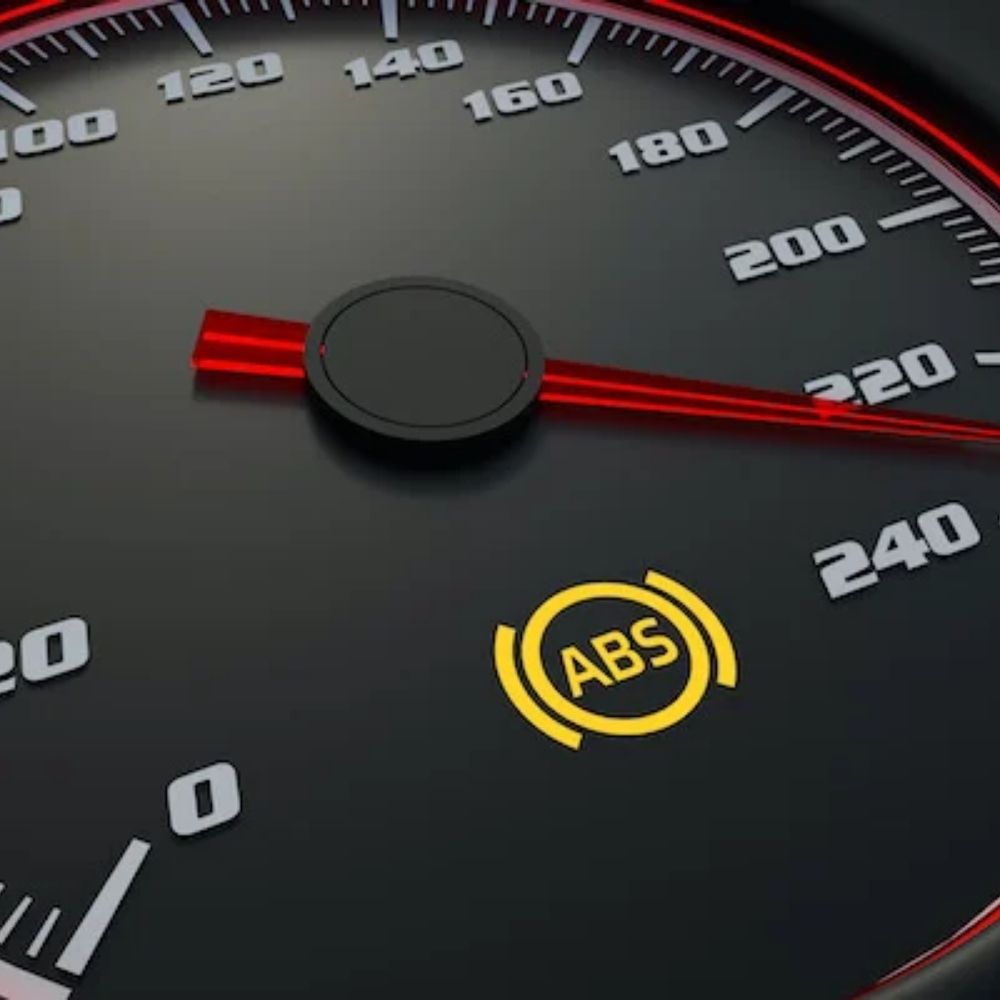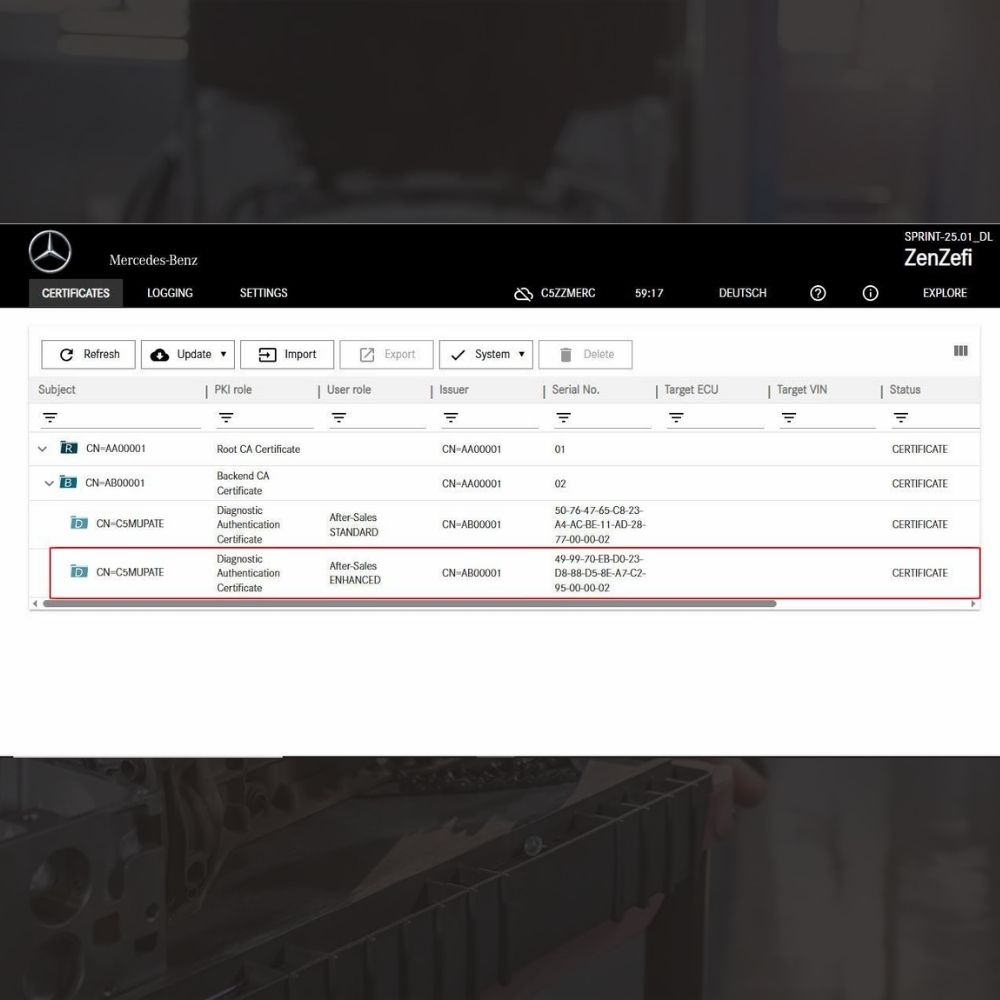

Audi DTC 16365:014 – Expert Solutions for Electrical Errors
Contents
- 1. Understanding Audi DTC 16365:014
- 1.1 Symptoms of DTC 16365:014
- 1.2 Potential Causes
- 2. Diagnosing the 16365:014 Error
- 2.1 Initial Scan
- 2.2 Visual Inspection
- 2.3 Component Testing
- 2.4 Advanced Diagnostics
- 3. Repairing the Audi DTC 16365:014 Error
- 3.1 Replacing the Control Module
- 3.2 Wiring and Connection Repairs
- 3.3 Software Updates and Recoding
- 3.4 Professional Assistance
- 4. AutoExplain: Your Partner in Audi Diagnostics and Repair
- 4.1 Remote Diagnostics and Programming
- 4.2 High-Quality Diagnostic Tools
- 4.3 Expert Support and Training
- 5. Preventative Measures for the Future
- 5.1 Regular Maintenance
- 5.2 Protecting Against Environmental Factors
- 5.3 Monitoring Vehicle Health
- 6. FAQ: Troubleshooting Audi DTC 16365:014
- 6.1 What Does the Fault Code 16365:014 Mean for My Audi?
- 6.2 Can I Drive My Audi with the 16365:014 Error?
- 6.3 How Much Does It Cost to Fix the 16365:014 Error?
- 6.4 Can I Replace the Control Module Myself?
- 6.5 What Tools Do I Need to Diagnose and Repair the 16365:014 Error?
- 6.6 How Can AutoExplain Help Me Fix the 16365:014 Error Remotely?
- 6.7 Are There Any Common Misdiagnoses Associated with the 16365:014 Error?
- 6.8 How Often Should I Scan My Audi for Fault Codes?
- 6.9 What Are the Risks of Ignoring the 16365:014 Error?
- 6.10 Where Can I Find a Qualified Audi Technician?
- 7. Contact AutoExplain Today
Is your Audi displaying the error code 16365:014? This diagnostic trouble code (DTC) indicates an electrical issue within the control module, specifically CPU 2, and can cause malfunctions in systems like lane change assist and adaptive cruise control. AutoExplain is here to guide you through diagnosing and resolving this issue efficiently, ensuring your Audi’s advanced features operate seamlessly again with coding and programming solutions.
1. Understanding Audi DTC 16365:014
What does Audi Dtc 16365:014 really mean? The Audi DTC 16365:014, often described as “Control Module – Electrical Error; CPU 2 Defective,” points to a critical electrical malfunction within the control module of your Audi. According to a study by the ASE Education Foundation, electrical issues are among the most challenging to diagnose due to the complexity of modern vehicle systems. This particular code indicates that the CPU 2 (Central Processing Unit) within the control module is not functioning correctly, which can disrupt various vehicle functions, including safety and driver-assistance systems.
1.1 Symptoms of DTC 16365:014
What symptoms should you watch out for? When the 16365:014 error code appears, you might notice several symptoms affecting your Audi’s performance. These symptoms not only compromise the functionality of specific systems but also raise safety concerns. Here’s a detailed look at what you might experience:
- Malfunctioning Lane Change Assist: The lane change assist system may become inoperative or behave erratically. This system relies on sensors to detect vehicles in adjacent lanes, alerting the driver to potential hazards during lane changes. When the system fails, drivers lose this valuable safety feature, increasing the risk of accidents.
- Adaptive Cruise Control (ACC) Issues: ACC might fail to engage or function correctly. ACC uses radar or lidar to maintain a set speed and distance from the vehicle ahead. A malfunctioning control module can disrupt this functionality, leading to inconsistent speed adjustments or complete system failure.
- Audi Brake Guard Problems: The Audi Brake Guard system, designed to provide autonomous emergency braking, may also be affected. This system detects potential collisions and automatically applies the brakes to mitigate or avoid an accident. When the system is compromised due to the 16365:014 error, the risk of collisions increases significantly.
- Warning Lights on the Dashboard: The dashboard may light up with warning indicators related to the affected systems. These lights serve as a clear signal that something is amiss and requires immediate attention. Ignoring these warnings can lead to further system degradation and increased safety risks.
- Systematic Errors: The error code often appears in conjunction with other fault codes, indicating a broader problem within the vehicle’s electronic systems. This can complicate diagnostics, as the root cause might be interconnected with other malfunctioning components.
Alt text: Audi dashboard displaying multiple warning lights, signaling potential system malfunctions and the need for immediate diagnostic attention.
1.2 Potential Causes
What could be causing the 16365:014 error? Understanding the possible causes behind the Audi DTC 16365:014 is crucial for effective diagnostics and repair. Several factors can contribute to this electrical error, each requiring a specific approach for resolution.
- Defective Control Module: The most direct cause is a failure within the control module itself. This module, which manages various functions such as lane change assist and adaptive cruise control, can suffer from internal component failures, leading to CPU 2 malfunctions.
- Wiring Issues: Damaged or corroded wiring can disrupt the communication between the control module and other vehicle systems. According to a study by SEMA, faulty wiring is a common cause of electrical problems in vehicles, leading to intermittent or complete system failures.
- Poor Connections: Loose or corroded connections can impede the flow of electricity, causing the control module to misbehave. Ensuring that all connections are secure and free from corrosion is essential for maintaining system integrity.
- Software Glitches: Software errors or glitches can also trigger the 16365:014 error. Modern vehicles rely heavily on software to manage various functions, and a bug or corruption in the software can lead to malfunctions.
- Voltage Problems: Over or undervoltage can damage the control module and other electrical components. Maintaining a stable voltage supply is critical for the proper functioning of electronic systems.
- Environmental Factors: Exposure to moisture, extreme temperatures, or physical damage can also compromise the control module’s integrity. Protecting the module from these elements can help prevent failures.
2. Diagnosing the 16365:014 Error
How do you properly diagnose the 16365:014 error? A precise diagnosis is crucial for resolving the Audi DTC 16365:014. Here’s a structured approach to identify the root cause of the problem.
2.1 Initial Scan
Why is an initial scan important? Start by performing a comprehensive scan of your Audi’s system using a diagnostic tool like VCDS (VAG-COM Diagnostic System) or an equivalent OBD-II scanner. This initial scan will confirm the presence of the 16365:014 code and reveal any other related fault codes that might provide additional context.
Step-by-Step Instructions:
- Connect the Diagnostic Tool: Plug the VCDS or OBD-II scanner into the OBD-II port, typically located under the dashboard.
- Power On: Turn on the ignition without starting the engine.
- Run a Full System Scan: Use the diagnostic tool to perform a full system scan, which will check all electronic control units (ECUs) in the vehicle.
- Record Fault Codes: Document all fault codes that appear, paying close attention to the 16365:014 code and any associated codes.
- Clear Fault Codes: After recording the codes, clear them to see if they reappear during subsequent testing.
2.2 Visual Inspection
What should you look for during a visual inspection? Conduct a thorough visual inspection of the control module, wiring, and connections. Look for any signs of damage, corrosion, or loose connections that could be contributing to the error.
Key Areas to Inspect:
- Control Module: Check the control module for physical damage, such as cracks or water intrusion.
- Wiring Harnesses: Examine the wiring harnesses connected to the control module for frayed wires, damaged insulation, or corrosion.
- Connectors: Ensure that all connectors are securely attached and free from corrosion. Use a contact cleaner to remove any buildup on the connector pins.
- Ground Connections: Verify that all ground connections are clean and tight. Poor grounding can cause a variety of electrical issues.
Alt text: Detailed view of corroded automotive wiring, highlighting the importance of inspecting and maintaining electrical connections to prevent system failures.
2.3 Component Testing
How do you test the control module and related components? Use a multimeter to test the voltage and continuity of the wiring and connections. This will help identify any breaks or shorts in the circuit. Additionally, test the control module itself to determine if it is functioning correctly.
Testing Procedures:
- Voltage Testing: Use a multimeter to measure the voltage at the control module’s power and ground connections. Ensure that the voltage is within the specified range.
- Continuity Testing: Perform continuity tests on the wiring to check for breaks or shorts. Disconnect the battery before performing continuity tests to avoid damaging the multimeter or vehicle electronics.
- Control Module Testing: If possible, use a specialized diagnostic tool to test the control module’s internal components. This can help identify specific failures within the module.
2.4 Advanced Diagnostics
What if the initial steps don’t reveal the problem? If the initial diagnostic steps do not uncover the issue, advanced diagnostics may be necessary. This could involve using more sophisticated diagnostic equipment or consulting with a specialist.
Advanced Techniques:
- Oscilloscope Analysis: An oscilloscope can be used to analyze the electrical signals within the control module and wiring. This can help identify intermittent or subtle issues that are difficult to detect with a multimeter.
- CAN Bus Analysis: The Controller Area Network (CAN) bus is the communication network that connects various ECUs in the vehicle. Analyzing the CAN bus signals can help identify communication problems that may be contributing to the 16365:014 error.
- Software Diagnostics: Use specialized software to diagnose the control module’s software and firmware. This can help identify any software glitches or corruption that may be causing the error.
3. Repairing the Audi DTC 16365:014 Error
What are the best strategies for fixing the 16365:014 error? Once you’ve accurately diagnosed the cause of the Audi DTC 16365:014, you can proceed with the necessary repairs. Here are some effective solutions.
3.1 Replacing the Control Module
When is replacement necessary? If the control module is found to be defective, replacing it is often the most straightforward solution. Ensure that you use a compatible replacement module and that it is properly programmed to your vehicle.
Step-by-Step Replacement Guide:
- Disconnect the Battery: Before starting any work, disconnect the negative terminal of the battery to prevent electrical shorts.
- Locate the Control Module: Find the control module, typically located in the rear fender or under the rear seat.
- Remove the Old Module: Disconnect the wiring harnesses and remove the old control module.
- Install the New Module: Install the new control module and reconnect the wiring harnesses.
- Programming the New Module: Program the new control module using VCDS or a similar diagnostic tool. This step is crucial to ensure that the module functions correctly with your vehicle’s other systems.
- Verify Operation: After programming, verify that the new module is functioning correctly by performing a system scan and testing the affected systems.
3.2 Wiring and Connection Repairs
How do you fix wiring and connection issues? If the problem is due to damaged wiring or corroded connections, repair or replace the affected components. Clean and secure all connections to ensure proper electrical flow.
Repair Procedures:
- Identify Damaged Wires: Locate any damaged or corroded wires.
- Repair or Replace Wires: Repair damaged wires by splicing in new sections of wire. Replace corroded wires entirely.
- Clean Connections: Clean corroded connectors with a contact cleaner.
- Secure Connections: Ensure that all connections are securely attached. Use dielectric grease to protect the connections from moisture and corrosion.
- Test the System: After making the repairs, test the system to verify that the problem has been resolved.
Alt text: Automotive technician meticulously repairing a wiring harness, emphasizing the precision required for resolving electrical issues in modern vehicles.
3.3 Software Updates and Recoding
Can software updates fix the issue? In some cases, software updates or recoding of the control module may resolve the 16365:014 error. Use VCDS or another compatible tool to update the software to the latest version or recode the module with the correct parameters.
Software Update and Recoding Steps:
- Connect Diagnostic Tool: Connect VCDS or another compatible diagnostic tool to the vehicle.
- Access Control Module: Access the control module that is generating the 16365:014 error.
- Check for Updates: Check for available software updates for the control module.
- Perform Software Update: If an update is available, follow the instructions in the diagnostic tool to perform the update.
- Recode the Module: After updating the software, recode the module with the correct parameters. This may involve entering specific coding values or selecting options from a menu.
- Verify Operation: After recoding, verify that the system is functioning correctly by performing a system scan and testing the affected systems.
3.4 Professional Assistance
When should you seek professional help? If you’re not comfortable performing these repairs yourself, or if the problem persists after attempting these solutions, it’s best to seek professional assistance from a qualified Audi technician. According to the Bureau of Labor Statistics, professional automotive technicians have the expertise and equipment necessary to diagnose and repair complex electrical issues.
4. AutoExplain: Your Partner in Audi Diagnostics and Repair
How can AutoExplain help you with Audi diagnostics and repair? At AutoExplain, we understand the complexities of modern automotive systems and offer comprehensive solutions for diagnosing and repairing issues like the Audi DTC 16365:014. Our services include:
4.1 Remote Diagnostics and Programming
What are the benefits of remote diagnostics and programming? AutoExplain provides remote diagnostics and programming services to help you quickly identify and resolve issues with your Audi’s control modules. Our expert technicians can remotely access your vehicle’s system, diagnose the problem, and program the necessary updates or recoding to restore functionality.
Benefits of AutoExplain’s Remote Services:
- Convenience: Our remote services save you time and money by eliminating the need to bring your vehicle to a shop.
- Expertise: Our technicians have extensive experience with Audi vehicles and are equipped with the latest diagnostic tools and software.
- Efficiency: We can quickly diagnose and resolve issues remotely, minimizing downtime and getting you back on the road faster.
4.2 High-Quality Diagnostic Tools
Why invest in high-quality diagnostic tools? AutoExplain offers a range of high-quality diagnostic tools that are essential for accurately diagnosing and repairing modern vehicles. Our tools are designed to be user-friendly and provide comprehensive diagnostic capabilities.
Featured Diagnostic Tools:
| Tool | Description | Benefits |
|---|---|---|
| VCDS (VAG-COM) | A comprehensive diagnostic tool specifically designed for Volkswagen and Audi vehicles. It provides access to all ECUs and supports advanced functions such as coding and adaptation. | Accurate diagnostics, coding capabilities, and user-friendly interface. |
| OBD-II Scanner | A basic diagnostic tool that can read and clear fault codes from any vehicle. | Affordable, easy to use, and compatible with all vehicles. |
| Multimeter | An essential tool for testing voltage, continuity, and resistance in electrical circuits. | Accurate measurements, essential for diagnosing electrical issues. |
| Oscilloscope | An advanced tool for analyzing electrical signals in detail. | Identifies subtle or intermittent electrical issues. |
4.3 Expert Support and Training
How can AutoExplain enhance your technical skills? AutoExplain offers expert support and training to help you enhance your diagnostic and repair skills. Our training programs cover a wide range of topics, including advanced diagnostics, coding, and programming.
Training Program Highlights:
- Hands-On Training: Our training programs include hands-on exercises to help you develop practical skills.
- Expert Instructors: Our instructors are experienced technicians with extensive knowledge of Audi vehicles.
- Comprehensive Curriculum: Our curriculum covers a wide range of topics, from basic diagnostics to advanced coding and programming.
Alt text: A skilled technician utilizing a diagnostic tool on an Audi engine, showcasing the importance of professional expertise in modern vehicle maintenance.
5. Preventative Measures for the Future
How can you prevent future electrical issues? Preventing future electrical issues in your Audi can save you time and money in the long run. Here are some preventative measures to consider:
5.1 Regular Maintenance
Why is regular maintenance important? Regular maintenance is essential for keeping your Audi in top condition and preventing electrical problems. Follow the manufacturer’s recommended maintenance schedule and pay close attention to the electrical system.
Maintenance Tips:
- Inspect Wiring: Regularly inspect wiring for damage, corrosion, or loose connections.
- Clean Connections: Clean battery terminals and other electrical connections to prevent corrosion.
- Check Battery: Have your battery tested regularly to ensure it is functioning correctly.
- Update Software: Keep your vehicle’s software up to date to prevent glitches and compatibility issues.
5.2 Protecting Against Environmental Factors
How do environmental factors affect your car’s electrical system? Protect your Audi from moisture, extreme temperatures, and physical damage. Store your vehicle in a garage or under a cover when possible, and avoid driving through deep water.
Protection Strategies:
- Garage Storage: Store your vehicle in a garage to protect it from the elements.
- Car Covers: Use a car cover to protect your vehicle when it is parked outside.
- Avoid Deep Water: Avoid driving through deep water to prevent water intrusion into the electrical system.
- Regular Cleaning: Regularly clean your vehicle to remove dirt and debris that can corrode electrical connections.
5.3 Monitoring Vehicle Health
How can you proactively monitor your Audi’s health? Use a diagnostic tool to regularly scan your vehicle’s system for fault codes. This can help you identify potential problems early on before they cause significant damage.
Monitoring Techniques:
- Regular Scans: Perform regular system scans using VCDS or another compatible diagnostic tool.
- Monitor Performance: Pay attention to any changes in your vehicle’s performance, such as decreased fuel economy or unusual behavior.
- Address Issues Promptly: Address any fault codes or performance issues promptly to prevent further damage.
6. FAQ: Troubleshooting Audi DTC 16365:014
Have more questions about the Audi DTC 16365:014? Here are some frequently asked questions to help you better understand and resolve this issue.
6.1 What Does the Fault Code 16365:014 Mean for My Audi?
The fault code 16365:014 indicates an electrical error within the control module, specifically CPU 2, which can affect systems like lane change assist and adaptive cruise control.
6.2 Can I Drive My Audi with the 16365:014 Error?
While you can technically drive your Audi with the 16365:014 error, it’s not recommended. The malfunctioning systems can compromise safety and driving comfort. It’s best to diagnose and repair the issue as soon as possible.
6.3 How Much Does It Cost to Fix the 16365:014 Error?
The cost to fix the 16365:014 error can vary depending on the cause and the extent of the damage. Replacing the control module can cost between $800 and $1500, while wiring repairs may range from $200 to $500. Software updates and recoding may cost between $100 and $300.
6.4 Can I Replace the Control Module Myself?
Replacing the control module yourself is possible, but it requires specialized tools and knowledge. You’ll need a compatible replacement module and a diagnostic tool to program it to your vehicle. If you’re not comfortable performing this repair, it’s best to seek professional assistance.
6.5 What Tools Do I Need to Diagnose and Repair the 16365:014 Error?
To diagnose and repair the 16365:014 error, you’ll need a diagnostic tool like VCDS or an OBD-II scanner, a multimeter, and possibly an oscilloscope for advanced diagnostics. You may also need basic hand tools for wiring repairs and module replacement.
6.6 How Can AutoExplain Help Me Fix the 16365:014 Error Remotely?
AutoExplain offers remote diagnostics and programming services to help you quickly identify and resolve issues with your Audi’s control modules. Our expert technicians can remotely access your vehicle’s system, diagnose the problem, and program the necessary updates or recoding to restore functionality.
6.7 Are There Any Common Misdiagnoses Associated with the 16365:014 Error?
Yes, one common misdiagnosis is attributing the error solely to a software glitch without thoroughly inspecting the wiring and connections. Always perform a comprehensive diagnostic process to identify the root cause.
6.8 How Often Should I Scan My Audi for Fault Codes?
It’s a good practice to scan your Audi for fault codes at least every six months or whenever you notice unusual behavior. Regular scans can help you identify potential problems early on before they cause significant damage.
6.9 What Are the Risks of Ignoring the 16365:014 Error?
Ignoring the 16365:014 error can lead to further damage to your vehicle’s electrical system and compromise the functionality of safety-critical systems like lane change assist and adaptive cruise control. It’s best to address the issue as soon as possible to prevent further complications.
6.10 Where Can I Find a Qualified Audi Technician?
You can find a qualified Audi technician by searching online directories or asking for recommendations from other Audi owners. Look for technicians with certifications from organizations like ASE (Automotive Service Excellence) to ensure they have the necessary skills and knowledge.
7. Contact AutoExplain Today
Ready to resolve your Audi DTC 16365:014 error and ensure your vehicle’s systems are functioning perfectly? Contact AutoExplain today for expert diagnostics, coding, and programming solutions. Our team is ready to provide the support and services you need to get back on the road with confidence.
AutoExplain Contact Information:
- Address: 1500 N Grant ST Sten Denver, Colorado, United States
- WhatsApp: +1(936)2896695
- Email: [email protected]
- Website: autoexplain.com
Don’t let electrical errors compromise your Audi’s performance and safety. Reach out to AutoExplain now and experience the best in automotive diagnostics and repair.


ABS Auto Brake Service – Anti-Lock Brake Service Cost

ABS vs Non ABS: What’s the Difference?

New Mercedes Car Coding Solution with ZenZefi certificate for DTS Monaco 9.02





